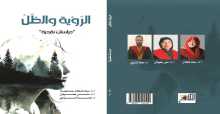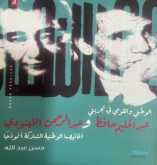آناو نقطة انطلاق الحضارات في العالم من تركمانستان الواقعة على الطريق الحرير كتاباتهم تسمى depe نسبة الى ختم الذي وجد في آناو ويرجع الى العصر البرونزي!!!!!!!!
خلال سنوات الخمسة الماضية قدمت عدة مقالات وابحاث حول التاريخ التوركمان والعالم التوركي لايصال حقائق ومعلومات تاريخية وتجنبها من التزوير
والتحريف، ولكن لم اتوقع ان اتهم بإتهامت تافهة لا اساس لها أبدا وانا هنا في هذا البحث اقدم دراسة كاملة عن ما قام به باحثون امريكيون وتوركمانستانيون في مجمع آسيا الوسطى التابعة لجامعة ولاية بنسلفانيا.. لقد اثبت عالم الاثار فريدريك هيبرت يكتشف اللغة المكتوبة االتي كانت غير معروفة من قبل الآثاريون والمؤرخون والتي ترجع الى حضارة اسيا الوسطى او حضارة طريق الحرير ٤٣٠٠ سنة مضت ... اكتشف الاثاريون في آناو موقع اثري مهم وهي بلدة مزدهرة في العصر البرونزي لها كتاباتها والختم الا ان الختم قد يكون اول دليل للغة المكتوبة لسكان الاصليين..
هذا يشير السيد هيبرت الى وجود حضارة ما قبل طريق الحرير حوالي٢٣٠٠ قبل الميلاد....
ويضم بلدات ومدن وحكام وقوانين وتجارة ومن المحتمل جدا تزامنة اللغة المكتوبة مع ازدهار كبير في مدن بلاد ما بين النهرين وايران القديمة حضارة اندوس خرابة ....
تم تنقيب باستعمال اجهزة متطورة في صيف عام ٢٠٠٠ وانتهى التنقيب بعد ثلاثة مواسم واكتشفت عدة مواقع الاثرية على طول الطريق الحرير ترجع بعض المدن والقرى الى ٤٥٠٠ قبل الميلاد وعثر على ختم محفور والحفر عبارة عن طائرة سوداء لامعة .....
ملاحظة :لتجنب بعض الاضعاف النفوس واتهاماتهم الفارغة اضع هنا النسخة الانكليزية
بحث وتقديم ديار الهرمزي
After three dusty seasons of excavations at the Central Asian site of Anau depe in Turkmenistan -- a site long acknowledged as a stopping point along the famous ancient Silk Road -- University of Pennsylvania Museum archaeologist Fredrik Hiebert and American and Turkmen colleagues have found evidence of a surprisingly sophisticated, thriving Bronze Age town, including an enigmatic stamp seal that may well be the first evidence of an indigenous written language. The new evidence, according to Hiebert, points to the existence of a complex pre-Silk Road civilization, circa 2300 B.C., featuring towns, cities, rulers, production, trade and now, quite possibly, written language, thriving contemporaneously with the great early cities of Mesopotamia, ancient Iran and the Indus civilization.
In the summer of 2000, excavating in the Bronze Age layers of Anau depe -- a site remarkable for the length of its occupation, with archaeological deposits that stretch from the earliest village way of life, 4500 B.C., to 15th Century Moslem times -- the archaeologists uncovered a unique engraved stamp seal of shiny black jet. The inscription was emphasized with a reddish brown pigment. Back at the University of Pennsylvania Museum, Hiebert asked colleagues with expertise in a variety of regional ancient writing systems to place the new find; the consensus was that the seal's markings reflect a local symbolic system hitherto unknown.
Hiebert's team discovered the stamp seal while excavating at the base of the Bronze Age mound at Anau, where they uncovered the eroded top of a very large, surprisingly well-built building, with walls that, even 4,300 years later, stand nearly two meters tall. Inside the rooms, archaeologists found the remains of finely made ceramics -- some clearly from other regions -- and numerous pieces of clay used to seal vessels or parcels.
According to Hiebert, Anau, a small site compared to nearby Silk Road sites like Namazga depe and Altyn depe, nonetheless shows evidence of involvement in a wide-reaching, managed system of distribution and trade occurring at perhaps hundreds of sites throughout the Central Asian Bronze Age period. "This pattern of small and large settlements having elite and bureaucratic functions is unique to the area," Hiebert said.
Hiebert and his Turkmenistan colleague Murad Kurbansakhatov are building upon research in the area that began in 1904, when Raphael Pumpelly, an American geologist, first brought a team of scientists to Anau to search for evidence of an ancient civilization. Soviet archaeologists in the 1970s began compiling evidence of a very sophisticated culture in the region -- data that, until recently, was kept largely within the Soviet Union. With the recent independence of Turkmenistan and Uzbekistan, American archaeologists are once again being invited to do research in the region, working in collaboration with the countries' own scientists.
Next season, Hiebert and Kurbansakhatov will continue research in the Silk Road region, digging further in the Broze Age settle at Anau, and also studying the long history of the site from its origins through its position as a settlement on the Silk Road
بحث وتقديم ديار الهرمزي
خلال سنوات الخمسة الماضية قدمت عدة مقالات وابحاث حول التاريخ التوركمان والعالم التوركي لايصال حقائق ومعلومات تاريخية وتجنبها من التزوير
والتحريف، ولكن لم اتوقع ان اتهم بإتهامت تافهة لا اساس لها أبدا وانا هنا في هذا البحث اقدم دراسة كاملة عن ما قام به باحثون امريكيون وتوركمانستانيون في مجمع آسيا الوسطى التابعة لجامعة ولاية بنسلفانيا.. لقد اثبت عالم الاثار فريدريك هيبرت يكتشف اللغة المكتوبة االتي كانت غير معروفة من قبل الآثاريون والمؤرخون والتي ترجع الى حضارة اسيا الوسطى او حضارة طريق الحرير ٤٣٠٠ سنة مضت ... اكتشف الاثاريون في آناو موقع اثري مهم وهي بلدة مزدهرة في العصر البرونزي لها كتاباتها والختم الا ان الختم قد يكون اول دليل للغة المكتوبة لسكان الاصليين..
هذا يشير السيد هيبرت الى وجود حضارة ما قبل طريق الحرير حوالي٢٣٠٠ قبل الميلاد....
ويضم بلدات ومدن وحكام وقوانين وتجارة ومن المحتمل جدا تزامنة اللغة المكتوبة مع ازدهار كبير في مدن بلاد ما بين النهرين وايران القديمة حضارة اندوس خرابة ....
تم تنقيب باستعمال اجهزة متطورة في صيف عام ٢٠٠٠ وانتهى التنقيب بعد ثلاثة مواسم واكتشفت عدة مواقع الاثرية على طول الطريق الحرير ترجع بعض المدن والقرى الى ٤٥٠٠ قبل الميلاد وعثر على ختم محفور والحفر عبارة عن طائرة سوداء لامعة .....
ملاحظة :لتجنب بعض الاضعاف النفوس واتهاماتهم الفارغة اضع هنا النسخة الانكليزية
بحث وتقديم ديار الهرمزي
After three dusty seasons of excavations at the Central Asian site of Anau depe in Turkmenistan -- a site long acknowledged as a stopping point along the famous ancient Silk Road -- University of Pennsylvania Museum archaeologist Fredrik Hiebert and American and Turkmen colleagues have found evidence of a surprisingly sophisticated, thriving Bronze Age town, including an enigmatic stamp seal that may well be the first evidence of an indigenous written language. The new evidence, according to Hiebert, points to the existence of a complex pre-Silk Road civilization, circa 2300 B.C., featuring towns, cities, rulers, production, trade and now, quite possibly, written language, thriving contemporaneously with the great early cities of Mesopotamia, ancient Iran and the Indus civilization.
In the summer of 2000, excavating in the Bronze Age layers of Anau depe -- a site remarkable for the length of its occupation, with archaeological deposits that stretch from the earliest village way of life, 4500 B.C., to 15th Century Moslem times -- the archaeologists uncovered a unique engraved stamp seal of shiny black jet. The inscription was emphasized with a reddish brown pigment. Back at the University of Pennsylvania Museum, Hiebert asked colleagues with expertise in a variety of regional ancient writing systems to place the new find; the consensus was that the seal's markings reflect a local symbolic system hitherto unknown.
Hiebert's team discovered the stamp seal while excavating at the base of the Bronze Age mound at Anau, where they uncovered the eroded top of a very large, surprisingly well-built building, with walls that, even 4,300 years later, stand nearly two meters tall. Inside the rooms, archaeologists found the remains of finely made ceramics -- some clearly from other regions -- and numerous pieces of clay used to seal vessels or parcels.
According to Hiebert, Anau, a small site compared to nearby Silk Road sites like Namazga depe and Altyn depe, nonetheless shows evidence of involvement in a wide-reaching, managed system of distribution and trade occurring at perhaps hundreds of sites throughout the Central Asian Bronze Age period. "This pattern of small and large settlements having elite and bureaucratic functions is unique to the area," Hiebert said.
Hiebert and his Turkmenistan colleague Murad Kurbansakhatov are building upon research in the area that began in 1904, when Raphael Pumpelly, an American geologist, first brought a team of scientists to Anau to search for evidence of an ancient civilization. Soviet archaeologists in the 1970s began compiling evidence of a very sophisticated culture in the region -- data that, until recently, was kept largely within the Soviet Union. With the recent independence of Turkmenistan and Uzbekistan, American archaeologists are once again being invited to do research in the region, working in collaboration with the countries' own scientists.
Next season, Hiebert and Kurbansakhatov will continue research in the Silk Road region, digging further in the Broze Age settle at Anau, and also studying the long history of the site from its origins through its position as a settlement on the Silk Road
بحث وتقديم ديار الهرمزي



 صور
صور














































- رتب حسب
- الأحدث
- الأقدم
التعليقات: 3